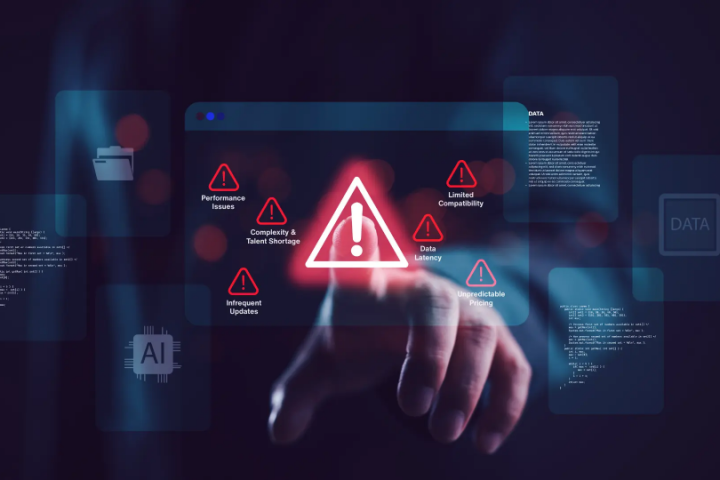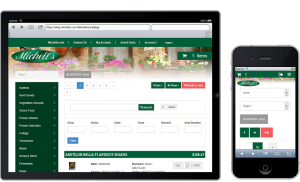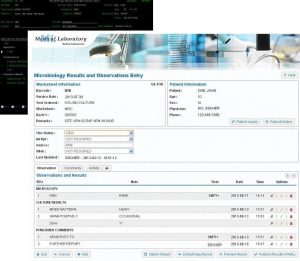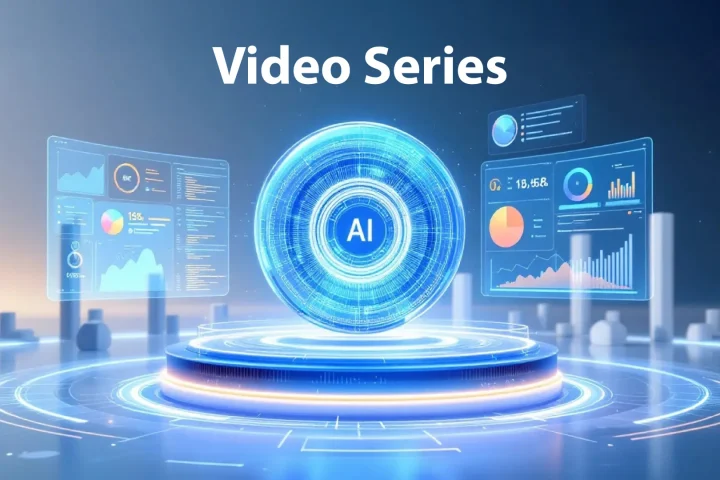
If your company had to rethink the way it did business when the pandemic hit, you’re not alone. For many organizations that rely on IBM i applications, the closure of offices, stores and clinics has forced them to adapt to a new reality. Depending on your industry, this could mean supporting remote employees, shifting from brick-and-mortar retail to eCommerce, or offering virtual healthcare appointments. While retail sales slumped and eCommerce sales soared, logistics and transportation companies had to scale up to meet the demand as more consumers procured goods online. In fact, Business Insider reports that US eCommerce is predicted to rise 18% in 2020. This comes after a February report projected modest growth of 2.8%.
There is no doubt that these changes have presented challenges for many, but they also represent an opportunity to innovate. In today’s digital economy, the role of IT (and IBM i!) is critical. IT leaders need to meet with business stakeholders to discuss how they can contribute to the growth of the business.
Digital disruption has been occurring for years across all industries as companies compete for their customers’ attention and loyalty. Improving your business by focusing on the customer experience is a driving force behind digital transformation. This can seem overwhelming if you’re not sure which initiatives to invest in to provide maximum value for the business.
In a recent IT Jungle article, I discussed the role that web and mobile applications can play in providing quick wins for your digital transformation efforts. Modernizing existing green screen applications or building new strategic applications can be a great place to start. If you haven’t already taken advantage of the capabilities that web-based technologies offer, your internal users and customers are likely asking for it. They expect modern, intuitive applications that are easy to access and navigate.
I’ve worked in the IBM midrange industry for over 28 years and began working directly with clients to build browser-based solutions in the early 2000s. While the technologies have evolved, the business benefits of delivering web and mobile applications on IBM i have only expanded. Over the years, our team partnered with organizations from around the world and across many industries to modernize their IBM i applications and build new applications.
Organizations often ask me similar questions when they’re looking at embarking on a web and mobile development project. Here are the top 5 questions I receive and my advice for making your project as successful as possible.
1. I’m a busy IT manager with many competing priorities, but people complain that my applications look outdated. What kind of project should I start with?
I often recommend focusing on growth areas that are revenue generating or revenue sustaining to uncover initiatives that will drive value quickly. This could be a strategic eCommerce application with mobile functionality or a B2B order entry app that enables clients to quickly place orders online. Green screen modernization that minimize training and support remote access for your employees is another quick win. The average IBM i web development project has a duration of three to nine months. These projects solve immediate challenges while delivering quick wins in terms of ROI.
I’ve also seen these initiatives lead to new projects and opportunities for IT departments. Modernizing an application and providing a browser-based solution is often highly visible. If you deploy a modernized application that delivers real business value, then other areas of the business will recognize value of IBM i and the ability for IT to deliver. This often drives other modernization initiatives.
2. Can you share examples of projects that other companies have completed?
Many of our clients are looking to extend the functionality of their ERP, whether it’s a third-party ERP system (e.g. Infor’s BPCS), or a homegrown system. Quite often, organizations we work with require self-serve B2B solutions that simplify the process for employees, customers and partners to place orders, check inventory, and more.
Michell’s is a horticultural broker with over 125 years in business. Their IT team worked with Fresche to develop a mobile-friendly B2B eCommerce website that uses PHP and runs on IBM i over DB2 data. The application has greatly simplified the process for Michell’s customers to place their own orders from anywhere, on any device.

Michell’s mobile-friendly B2B eCommerce website, as viewed on multiple devices.
Some organizations also need to modernize internal operations. In partnership with our team, a prominent healthcare company improved operational efficiency by giving their green screen applications a modern web interface. The web GUI leveraged their RPG code and has improved end-user productivity with a more intuitive UX that has streamlined entry of lab results. The organization is also seeing fewer data entry errors because data is entered directly into the application. Learn more here.

The initial development, which included a custom skin that matched the organization’s look, took only two weeks.
If you have already modernized an application, it could be time to look at how you can improve it. MedAxcess is a browser-based IBM i application that was originally developed in 2006 in partnership with our web development team. It provides MedAxiom’s members with analytical data that is displayed in interactive charts, graphs and dashboards and recently underwent a significant redesign and restructuring to better support mobile devices and improve the user experience for members. Learn more about the IBM i mobile development project here.
3. These projects look great, but how could I possibly get mine done with limited time and resources?
I often hear that IBM i development shops are asked to do more with fewer resources and as a result, they’re not equipped to take on modern browser-based application development. Building a team of individuals with both web development and IBM i expertise can be a substantial undertaking that requires significant investment.
Partnering with an organization such as Fresche streamlines web development and often results in quicker time-to-market because we have extensive experience with IBM i, browser-based and mobile friendly application development projects and integrations with APIs and other technologies.
This approach also allows you to build a team, get a job done and move on. You can then move to the next phase of modernization without having the long-term expense of new employees. At Fresche, we’re big proponents of phased IBM i modernization. Every organization’s needs are unique and as such, we don’t believe in a cookie-cutter approach.
4. I have an idea of what I want to achieve but I don’t know how to get from Point A to Point B.
This is very common. Most clients come to us with a vision of what they want to achieve but no clear path to getting the job done. This could entail providing self-serve access to applications or modernizing a green screen interface that is driving your sales team crazy. It’s perfectly fine if you don’t have a detailed list of technical requirements. It’s more important to understand what you want to achieve for your business than knowing which technologies and solutions you want to use.
In many cases, a two-phase development process yields the most success in terms of business value and time to market. In the first phase is an IBM i application discovery, where our team analyzes the client’s system to understand their business, define the project goals and estimate the cost. From there, we collaborate with the client to build a wire frame that serves as the overall a roadmap for the development phase.
During the wire framing process, we will present a new user interface as well as the new user experience for the client. In most cases, the proposed application will integrate with their existing systems. For example, you may already have an order fulfillment or inventory management system that’s working fine, but you need the front-end for your sales team or customers. The result is a seamless modernization solution that doesn’t force you to start changing your business practices to accommodate.
Development follows in the second phase. The Fresche services team can take this on or work in partnership with our client’s technical resources. For example, we are currently working with a client to leverage existing resources and skill sets to develop RPG stored procedures that will return the data needed by the front-end application. We are decoupling the front-end from the back-end, which allows them to focus on the area that they know well, and for us to build the area that we’re experts in.
5. I’m worried about risk. We all hear about software development projects that cost multiple millions of dollars, go sideways, and get tossed.
Taking a collaborative and phased approach to web development reduces risk because you are directly involved from the beginning. A thorough discovery and wireframing process increases your likelihood of success because it gives you an understanding of how the application will work before development starts.
I’m fortunate to receive feedback directly from end-users whose jobs have been made easier with a new application. I also speak to CEOs and CFOs about the money that they’re saving and the quick ROI that they’re seeing. I also enjoy hearing from IT about how the applications are running smoothly that they are being recognized for the successful IT initiatives that they’ve completed. That’s how I know we did our job right.
My advice for anyone who is looking at modernization and digital innovation is to start somewhere. Doing nothing is no longer an option, and taking a phased approach allows you to evolve. Maybe you’ll start by developing a customer facing B2B application, then add to it over time. Web and mobile development can be a stepping stone on your digital transformation journey and if you’re taking small steps forward, at least you’re moving forward.
Can you help me build the business case so I can get buy-in for my project?
Absolutely. Download this eBook, Making the Business Case for IBM i Green Screen Modernization, for an overview of the top reasons for IBM i web and mobile development.
You can also schedule a free virtual whiteboard session to map out your digital innovation strategy with our experts.
If you would like to speak with our team to understand your options, the different engagement models and get some pricing, reach out to us at info@freschesolutions.com.



